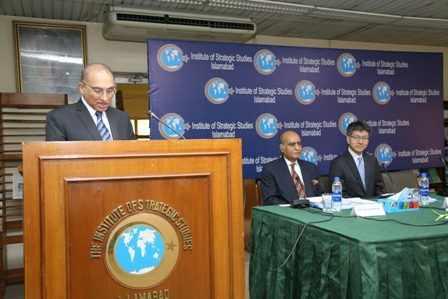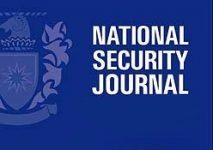Statement – Public Talk on “BRI & FOIP: Are They Compatible?“
By Professor Takahara
September 30, 2019
Dr. Akio Takahara, Distinguished Guests, Ladies and Gentlemen:
It gives me great pleasure to welcome you all to today’s public talk. Our speaker today is an accomplished scholar Dr. Akio Takahara, Dean Graduate School of Public Policy and Professor of Contemporary Politics at the University of Tokyo. I would also like to thank the Japanese Embassy in Islamabad for introducing the learned professor to us.
Dr. Takahara, this Institute is one of the oldest institutes in Islamabad. Established in 1973, we conduct research on contemporary issues, convene events to foster dialogue and understanding, and also provide policy inputs to the Ministry of Foreign Affairs and other stakeholders in the country. Interacting with academia, civil society, and eminent scholars is what enriches our work the most. We are truly honoured that such a learned scholar from Japan is gracing us with his presence and thoughts.
The topic that you have chosen for your talk today is indeed interesting and most relevant to what is happening to our world and our continent Asia. Indeed, the world around us is in a flux. Great-power competition has returned to the forefront of international politics. This time Asia, our continent, is home to growing strategic competition between China and the United States. Both countries, China and the US, have put forward competing visions for future Asian security.
Over six years ago in 2013, China launched ‘Belt and Road Initiative’, popularly known as BRI, a vast programme to promote global trade, infrastructure development, and investments, involving dozens of countries and international organizations, envisaging more than US$1 trillion in investment. The BRI was preceded by the concepts of One Belt One Road and the Silk Road Economic Belt. It is my understanding that in BRI, the “belt” refers to overland trade routes, while the “road” actually alludes to sea lanes connecting Southeast Asia with Africa and Europe. In 2016, President Xi Jinping called for a new regional security cooperation structure that would ‘suit Asia’s unique traits.’ He termed it, ‘Asian security concept’.
On the US side, we noted that initially, the U.S. watched BRI grow as Obama administration had sought to integrate China into the global order. However, later, Washington started to push back. The goal ostensibly was to limit the growing Chinese reach in Eurasia and Asia-Pacific. The current Trump administration has embarked upon an Indo-Pacific Strategy to preserve the existing US-dominated international order in the Indian and Pacific Oceans. The US initiative, in a way, builds on the idea of Free and Open Indo-Pacific (FOIP) that was first announced by Japanese Prime Minister Shinzo Abe in August 2016. The Japanese officials contend that for them the FOIP was a concept, not a strategy.
India and Australia have been drawn into the FOIP through a Quadrilateral Security Dialogue (QSD, also known as the Quad) for security cooperation among Japan, the United States, Australia, and India. Under the strategy, the United States is expanding maritime security cooperation in the Indian Ocean region, including through the new Bay of Bengal Initiative, and extending maritime security and peacekeeping to the Pacific Islands. Similarly, as an economic framework, FOIP talks about an alignment of the Indian and the Pacific Oceans, terming it as the confluence of the two seas.
Ladies and Gentlemen,
These two visions for Asia’s security and development are accelerating U.S.-China competition in Asia. This has the potential to affect strategic and economic engagement of China with the Eurasian nations as regional order evolves.
China has maintained a skeptical view of the FOIP. Beijing views FOIP strategy as a medium being used to employ political, economic, diplomatic, military and other means to undermine China, and contain its rise, and ultimately maintain US hegemony.
In this competition, most Asian countries find themselves in a difficult situation: either support a current super-power or align with the emerging major power of the region which can displace U.S. as super-power in the long-run. A third-option for them is to hedge between Beijing and Washington by cooperating with both in select economic and foreign policy endeavors. This can complicate the successful implementation of both the Indo-Pacific strategy and the Belt and Road Initiative
As we look forward to hearing from the esteemed professor, two questions beg answers:
- Is there a common ground between the Chinese and the U.S. visions for Asian security and development?
- Can China-U.S. competition be managed in a way that advances regional peace and stability?
For countries like Pakistan, the accelerating strategic competition in Asia could generate new economic and strategic challenges. Thus, navigating this competition will be a major policy-challenge for Pakistani leaders in the years ahead.
Once again, I thank you Professor Takahara for sparing your time for us, and we all are keen to hear you today.
I thank you all.












